MASONRY & STONE
Masonry
Masonry repair is a major part of building restoration. It includes pointing, brick and parapet reconstruction, and may also include specially-designed anchors for brick, color matching, and staining of stones.
When a building’s façade is exposed to weather, the freeze and thaw cycle can have a detrimental impact on the masonry of a building. AM&G Waterproofing addresses the problems that may arise with services that include reconstruction of parapets, the removal and resetting of coping stones, modification and restoration of deteriorated structural steel, waterproofing of lintels and window jambs, replacement of deteriorated window sills, and the installation of face-mounted or through-wall flashings on parapet walls. All of this takes masonry expertise.
For our repointing work, AM&G uses tools equipped with vacuums to minimize the dust. We also do façade brick replacement, and clear waterproofing repellent application. And at AM&G, both large and small jobs get the same attention to detail.
Stone
AM&G takes particular pride in our stone restoration. In our decades of experience in New York City, we’ve encountered and restored pre-cast concrete, terracotta, GFRC (Fiberglass), limestone, marble, granite, and more. Each of these materials requires a different type of treatment and approach.
AM&G has a long list of suppliers with whom we’ve worked for years, and who supply us with high quality materials. Some of the elements and trim pieces we restore are quoins, cornices, urns, scrolls, stone bases, gargoyles, and window jambs — the architectural features of a building that gives it definition and character. When it comes to these architectural elements, high quality is vital because they are often the most noticeable aspect of a building. The anchoring systems for stones, in particular, can be very elaborate. AM&G can fabricate anchoring systems and shapes necessary for all types of stones. Like New York’s buildings, each stone and system is unique, and we understand the engineering issues involved in all aspects of custom stonework, along with the importance of adhering to each architect’s original vision.
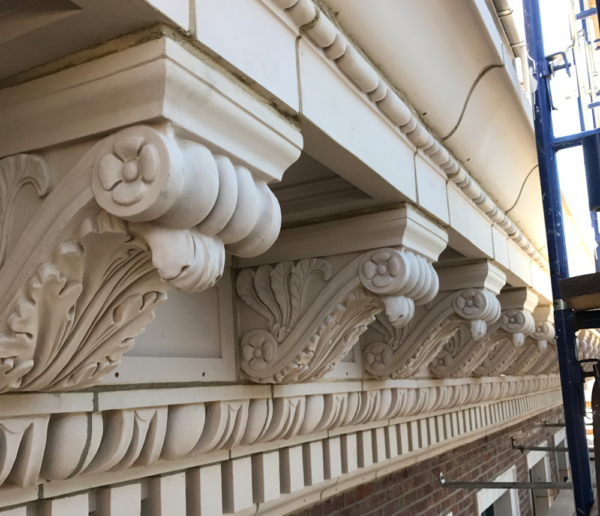
7 Gouverneur Slip East
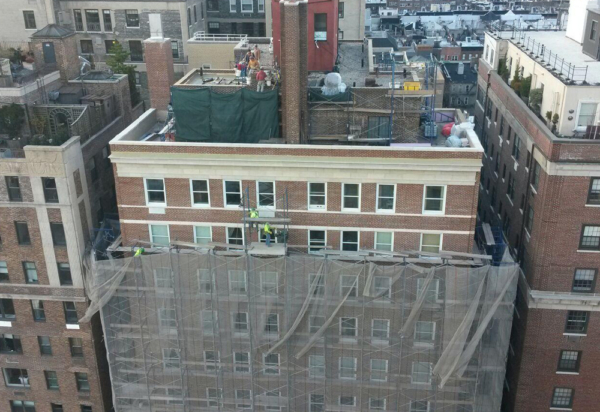
544 East 86 St.
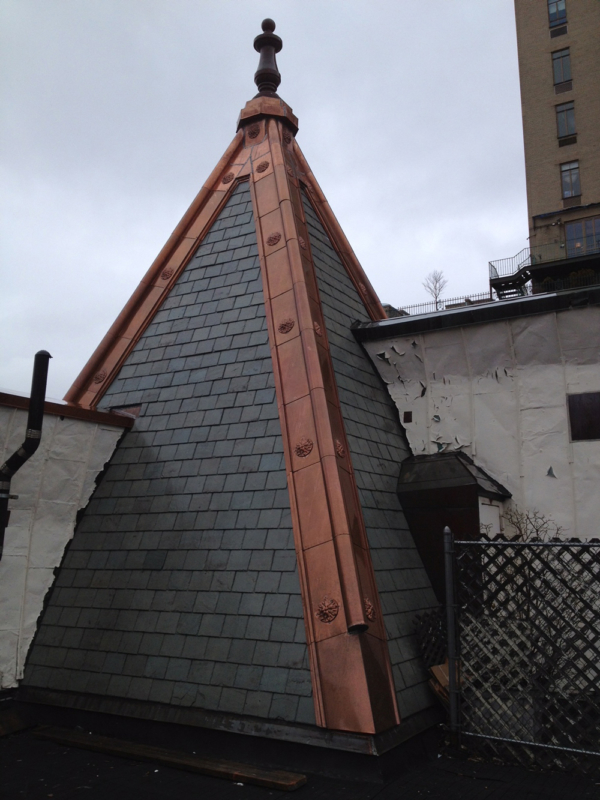
135 CPW
Stone Glossary:

TERRACOTTA
Terracotta is a durable and waterproof ceramic material made from baked clay. Its reddish-brown color comes from the natural iron content in clay. Terracotta is used in everything from bricks and shingles, to decorative elements and ornament on buildings. It’s been a preferred material since ancient times by cultures around the world.

GFRC
Glass Fiber Reinforced Concrete is a cementitious mixture reinforced with glass fibers, as well as high-performance polymers and other additives. It is a superior construction material and offers a natural stone appearance, while being extremely strong, light, and moldable. GFRC can be formed into almost any shape – ornamental or structural. Significantly lighter than concrete, it is used often in architectural detail and ornament.
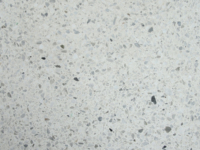
PRECAST CONCRETE
Unlike sidewalks or floors which are poured in place, precast concrete has been cast into form before being used in position. Precast concrete can be used to form many architectural features, from walls and panels, to pipes, tunnels and safety barriers. Precast concrete is extremely strong and requires minimal maintenance.

GRANITE
Granite is formed from molten rock which has been cooled over millennia. A coarse-grained, crystalline igneous rock, it has a rough, crusty surface and a rich coloration that varies depending on the different minerals in the particular granite. As a construction material, it is used in many ways, from rough-hewn blocks, to highly polished, decorative tiles and surfaces.
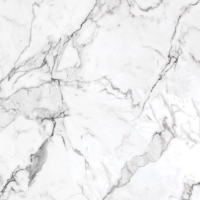
MARBLE
Marble is what is known as a “metamorphic rock”. It is mostly limestone rock that has undergone a chemical change from pressure or heat. Long considered an elegant and desirable material, it is is characterized by streaks or veins of color, and an ability to take to a highly polished finish. The color in marble is due to chemical impurities from a variety of minerals, and marble itself comes in a wide range of colors.
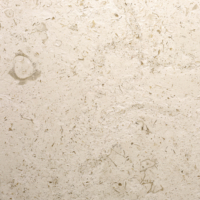
LIMESTONE
Limestone is derived from sedimentary rocks made, for the most part, from the mineral calcite in leftover marine organisms deposited on the floors of evaporated seas and lakes. Limestone has been a very popular building material in North America and Europe for centuries, and is the primary source of lime for cements. Limestone is particularly vulnerable to acid rain and weather conditions.
Services
Our Services
Roofing
Waterproofing
Restoration
Masonry & Stone
Steel & Sheet Metal
Investigation & Probes
Custom Vendors
LL11 Scaffold Inspections
Projects
Project Highlights
Our Portfolio
Links

